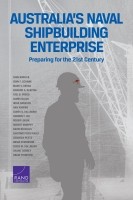| 来源类型 | Research Reports
|
| 规范类型 | 报告
|
| ISBN | 9780833090294
|
| 来源ID | RR-1093-AUS
|
| Australia's Naval Shipbuilding Enterprise: Preparing for the 21st Century |
| John Birkler; John F. Schank; Mark V. Arena; Edward G. Keating; Joel B. Predd; James Black; Irina Elena Danescu; Dan Jenkins; James G. Kallimani; Gordon T. Lee; et al.
|
| 发表日期 | 2015
|
| 出版年 | 2015
|
| 页码 | 294
|
| 语种 | 英语
|
| 结论 |
Australian Policymakers Face a Trade-Off Between Paying a Price Premium and Benefiting from Broader Economic Development - The Australian government must choose among three options: build the naval surface ships on Australia's acquisition list entirely in-country, build them partially in-country and partially overseas, or have them built at shipyards overseas. Each strategy carries costs and risks.
- Our examination concludes that domestic production of naval ships in Australia currently carries a price premium — estimated to be between 30 to 40 percent compared with similar ships built abroad.
- The premium to build in Australia could be lower than the 30 to 40 percent range if Australia adopts a continuous build strategy to avoid rebuilding an industrial and management capability with each new ship program, starts with mature designs at the onset of production, and minimizes changes during production. With such measures (and a cultural shift in industry toward continuous improvement), we can envision this premium being cut in half.
- Our examination of shipbuilding's economic effects suggests that there may be economic benefits associated with shipbuilding, especially when it occurs in areas that would otherwise have slack in their labor forces. The benefits are unclear and are largely dependent on broader economic conditions in Australia.
|
| 摘要 |
- The Australian government faces a trade-off between paying a price premium for indigenous production and benefiting from some broader economic development from such production. The 30- to 40-percent price premium for building in Australia could drop to approximately half that level over time with a steady production program that leads to a productive workforce.
- Supporting an Australian shipbuilding industry that is cost-effective will require specific steps, including filling the gap between the end of the air warfare destroyer program and the start of Future Frigate construction and adopting a continuous build strategy that starts a new surface combatant every 18 months to two years. There will be some challenges with replacing the Anzac-class ships in a timely manner, but those challenges can be overcome with careful management of the current and future fleets.
|
| 主题 | Australia
; Military Acquisition and Procurement
; Military Ships and Naval Vessels
; Naval Warfare
|
| URL | https://www.rand.org/pubs/research_reports/RR1093.html
|
| 来源智库 | RAND Corporation (United States)
|
| 资源类型 | 智库出版物
|
| 条目标识符 | http://119.78.100.153/handle/2XGU8XDN/108010
|
推荐引用方式
GB/T 7714 |
John Birkler,John F. Schank,Mark V. Arena,et al. Australia's Naval Shipbuilding Enterprise: Preparing for the 21st Century. 2015.
|
|
文件名:
|
x1495316247577.jpg
|
|
格式:
|
JPEG
|

|
文件名:
|
RAND_RR1093.pdf
|
|
格式:
|
Adobe PDF
|
除非特别说明,本系统中所有内容都受版权保护,并保留所有权利。